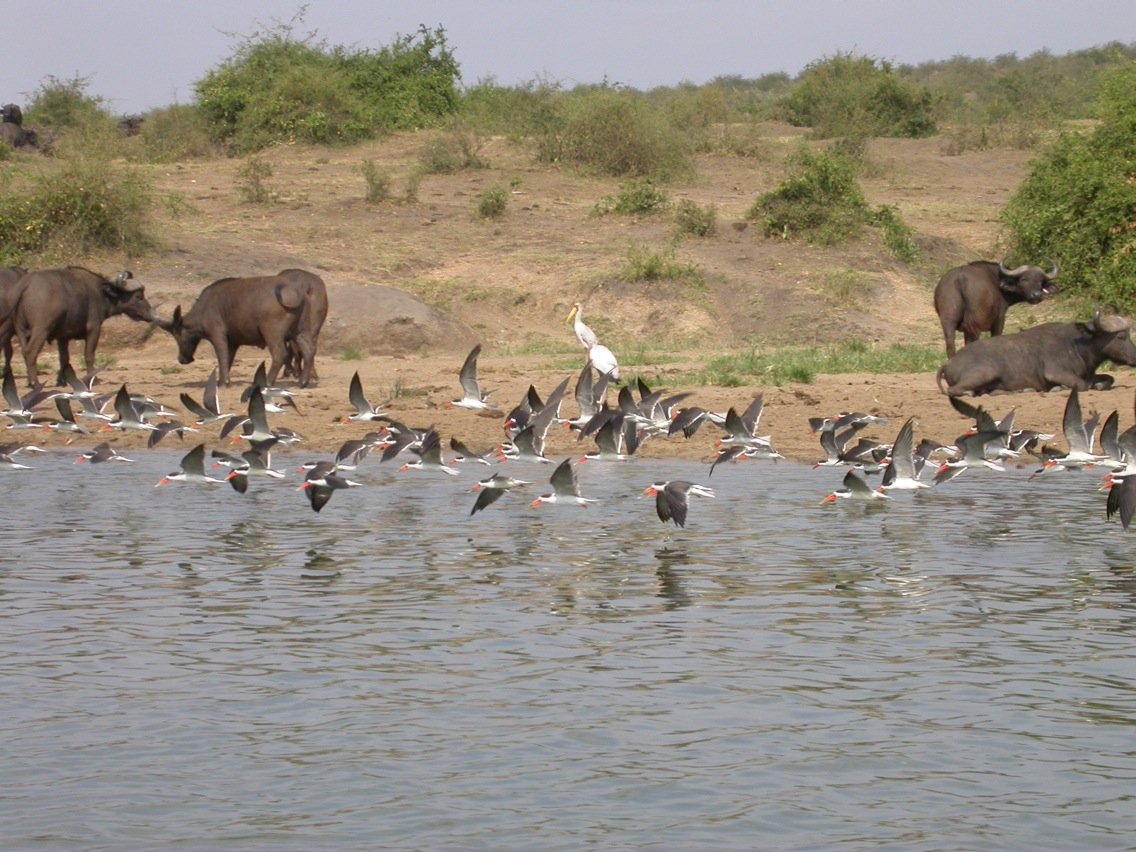
It’s a month to I go traveling in Africa again, but between that date and now I have a massive project to deliver, which has reached the ‘invading my dreams’ level of panic. Consequently my usual pre-travel excitement is a lot lower than usual, and I’m spending much less time than I’d like unproductively daydreaming about the birds I’ll see. To try and increase my levels of excitement, and also because my laptop remains bricked, (and certainly not because all I want to do is go to bed) here are some more African birds!
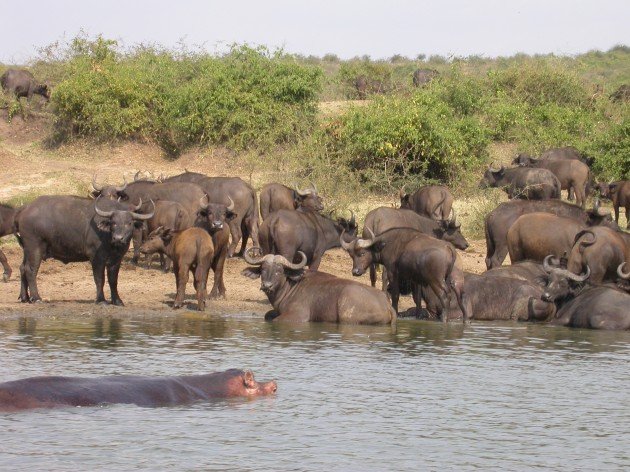 Can you spot the African bird in this shot? There is a cool one!
Can you spot the African bird in this shot? There is a cool one!
Skimmers are funny things. I can’t honestly remember what the current Russian Doll arrangement is for the skuas, gulls, terns and skimmers, so they are either their own family or a type of skua, gull or tern. At any rate there are three species, the Black Skimmer (which isn’t that much blacker than the others) which is found in the Americas, the Indian Skimmer, which is the most vulnerable member of the family, and the African Skimmer, which is widespread but nowhere common in Africa.
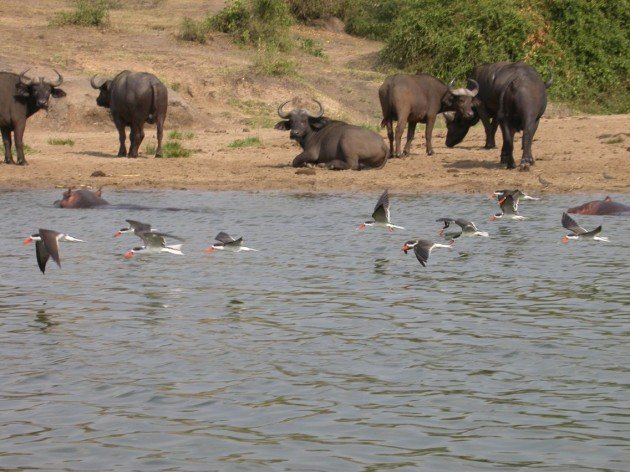 Some African Skimmers pass by some African Buffalo. One is even skimming.
Some African Skimmers pass by some African Buffalo. One is even skimming.
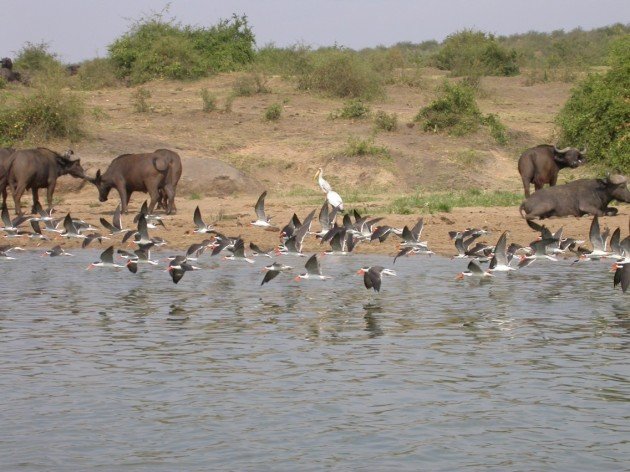 More African Skimmers, this time with some Yellow-billed Storks
More African Skimmers, this time with some Yellow-billed Storks
 The African Skimmers also fly over hippos.
The African Skimmers also fly over hippos.
These African Skimmers were photographed at the Kazinga Channel, a body of water linking Lake George and Lake Edward in western Uganda’s Queen Elizabeth National Park. As well as being a great river to cruise for game, you can also see great birds like Water Stone-curlews, Madagascar Bee-eaters, Goliath Herons and Red Spurfowl.
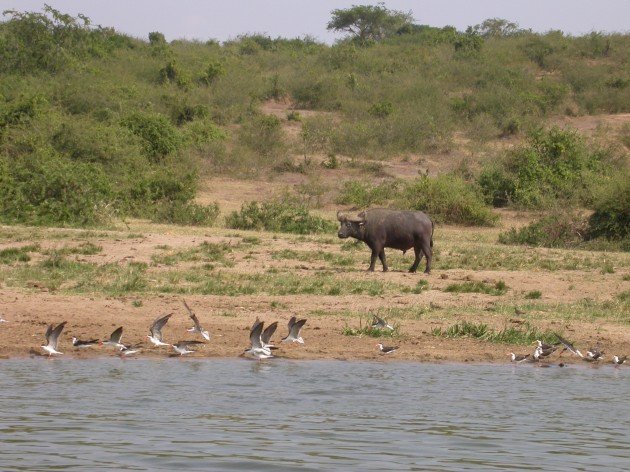 Close examination of this photo may reveal a Collared Pratincole.
Close examination of this photo may reveal a Collared Pratincole.
So go to Queen Elizabeth National Park and tick this tricky species (I actually have no idea how seasonal this species is here).


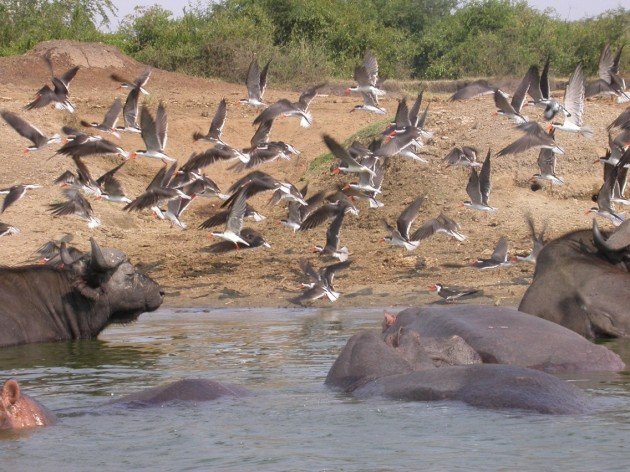
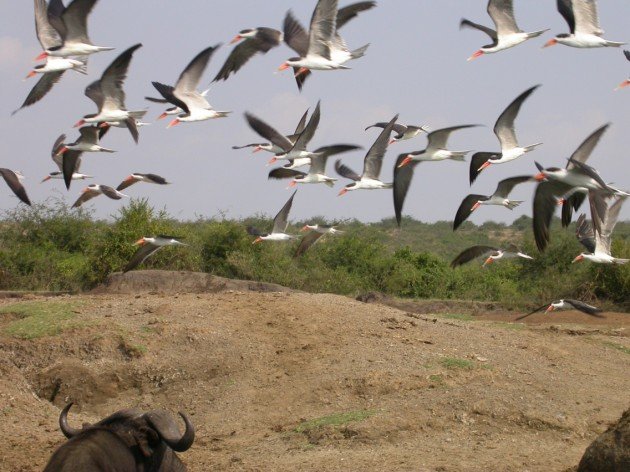
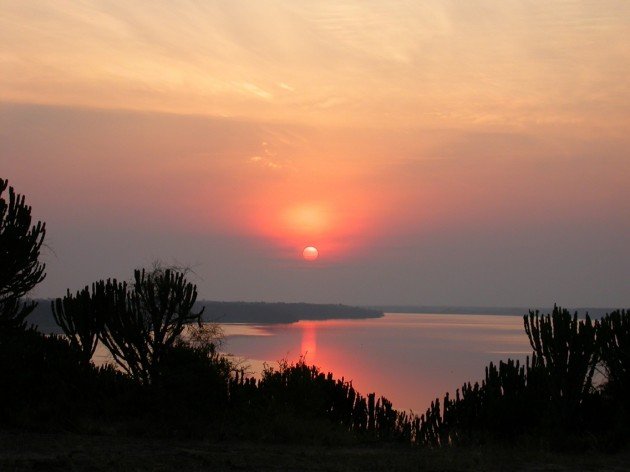











Looks like at least four Yellow-billed Oxpeckers in the one photo.